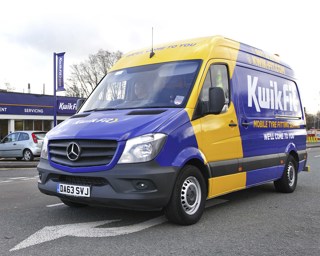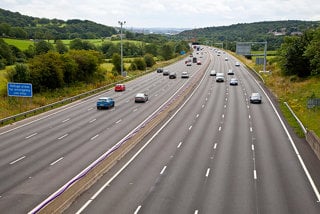Recent studies by Highways England has shown that the hard shoulder is causing confusion for UK drivers, says Kwik Fit.
When the hard shoulder is open drivers are choosing to avoid it due to safety concerns, and not knowing when it’s appropriate to use it or not.
Over half (56%) of British drivers, around 23.1 million people, say they avoid driving on the hard shoulder of smart motorway even when the signs indicate its open for traffic.
Roger Griggs, communications director of Kwik Fit, said: “These findings reflect the concerns and uncertainty that many drivers have when driving on smart motorways.
“It’s clear that if many drivers are avoiding using the hard shoulder when it’s open, then the extra capacity which smart motorways are designed to provide is not being utilised properly and we will end up being in a worse position than with the original road layout.
“It is vital that there is a nationwide information campaign to ensure that drivers fully understand when they can and cannot use the hard shoulder if smart motorways are to be accepted by drivers and provide a way to ease congestion – something we need desperately.”
Analysis shows that 24% said that they do not think smart motorways are safe, and tend to drive on them as if they are a normal motorway.
Other factors given by drivers for avoiding the hard shoulder on smart motorways were that they do not like driving so close to the verge (15%), that they are worried about debris causing damage to their car or getting a puncture (15%), and not having an escape lane in case they have to switch lanes quickly (14%).
One in five drivers (20%) said they did not know when the hard shoulder was in use, while 13% said you could never use the hard shoulder of a smart motorway.
A lowly four in ten drivers (42%) correctly stated that you could drive on the hard shoulder on a smart motorway only when directed by overhead signs.



















The Engineer - 05/09/2019 15:22
I got put off using the inside lane the day I saw a smash between someone and someone else who had broken down on the M5, the lane close signs were not on even then and people were having to swerve around the carnage. Apparently it depends on operators to set the signs. I believe every section of these roads are 100% covered by cameras. Surely there is a technological solution, software that can monitor the lane and the instant it detects an object stopping or going below a certain speed it triggers the lane closure warning. My new car has a camera and can apparently detect all kinds of obstacles and their behaviour and react to it so it can't be so hard.